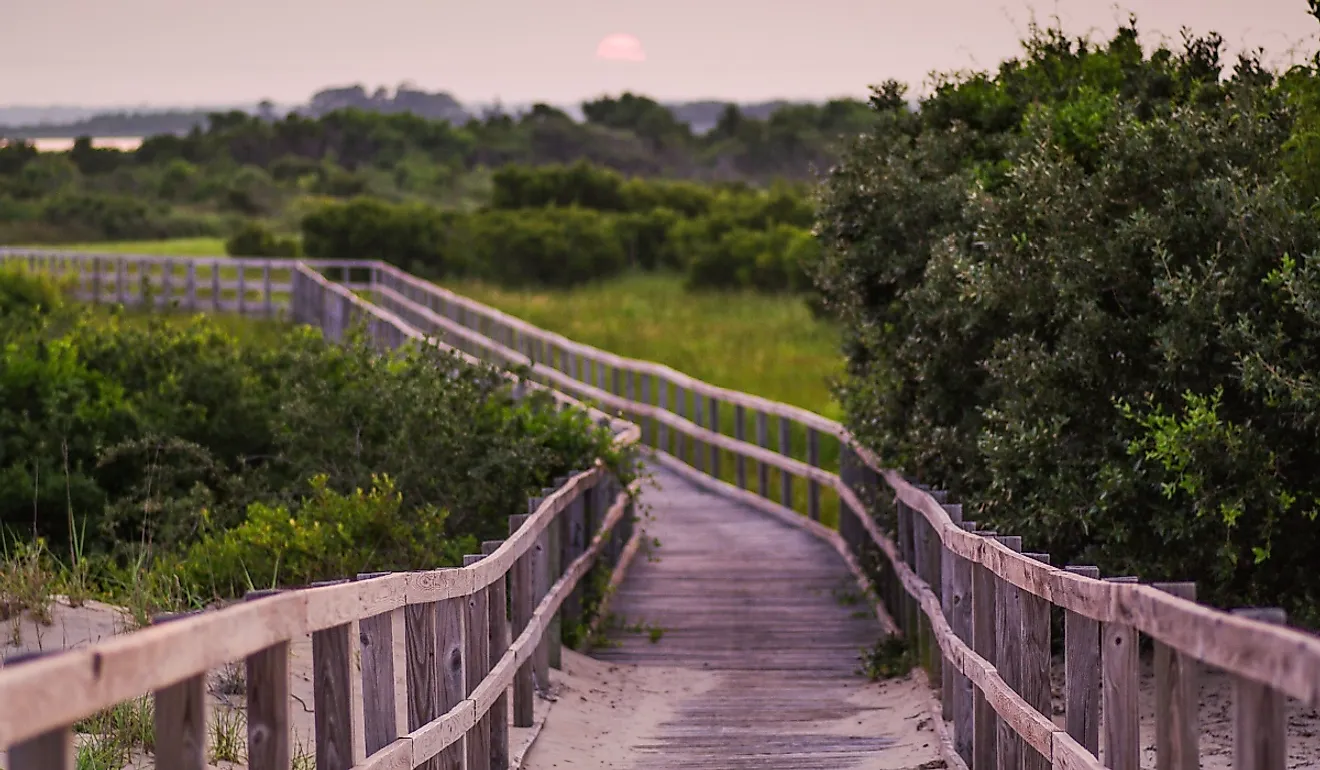
The 11 Most Snake Infested Areas In Virginia
Virginia has more than thirty snake species gliding and slithering its territory. Interestingly, only three of these are venomous, and all belong to the rattlesnake family; the cottonmouth, copperhead, and timber rattlesnake. While these snakes are spread across the state, some areas provide the ideal mix of factors, from ample food and ideal temperature to perfect cover, for them to thrive, resulting in massive snake populations.
This article will illuminate the areas most infested with snakes in Virginia and examine the factors that attract them. When venturing into the state’s wilderness, whether hiking or camping, it is crucial to know what to do when encountering a snake to avoid a nasty outcome. Unlike popular belief, snakes are not out to bite or harm us; on the contrary, they try to find a meal and avoid predators.
Smith Mountain Lake
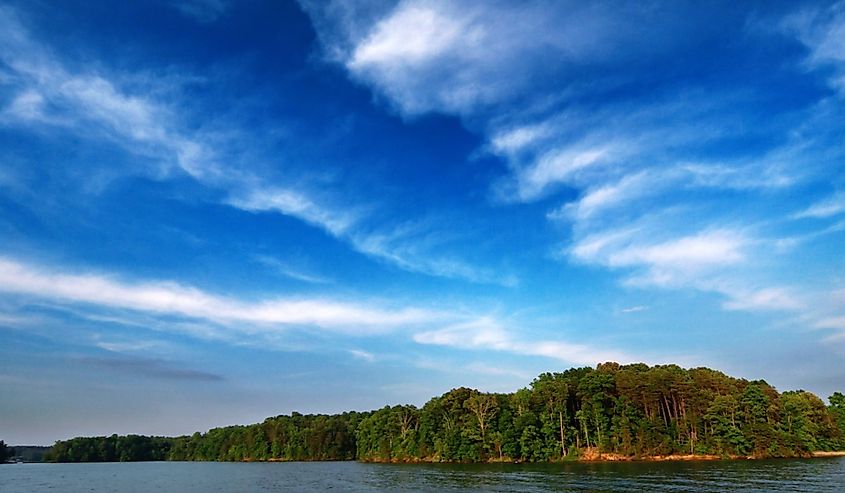
Smith Mountain Lake is a massive waterbody in Virginia’s Roanoke region and the state’s second-largest lake. It straddles the cities of Lynchburg and Roanoke, offering 500 miles of beautiful coastline for endless recreation. From swimming and fishing to boating and jet skiing, adventurers congregate here to take advantage of its diverse opportunities. Along the shores of the lake, you will find thick forests and shrubs inhabited by small animals like lizards and amphibians.
This abundance of prey and a readily accessible water source attracts a huge snake population to the area, such as the eastern hognose snake, eastern ribbon snake, northern water snake, and black rat snake. While these are not venomous, the copperhead and cottonmouth have been spotted in the Smith Mountain Lake region.
Douthat State Park
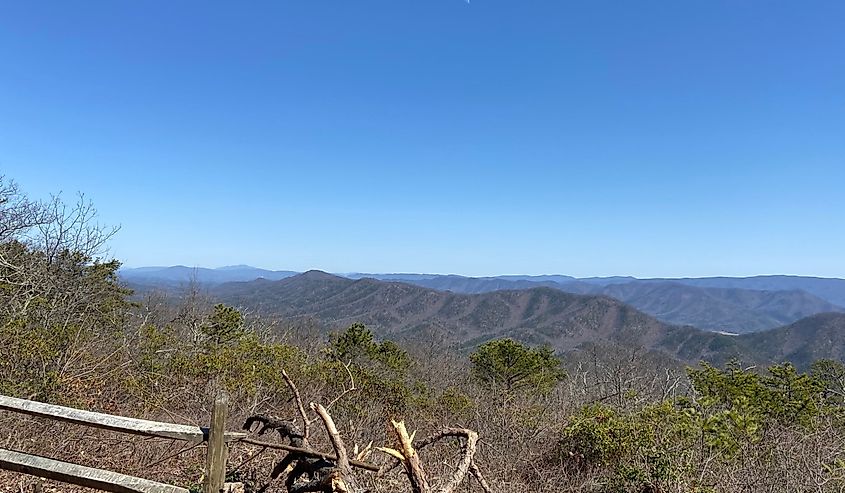
Douthat State Park is Virginia’s second-largest state park, covering over 4,500 acres in the Allegheny Mountains. It houses diverse forms of landscapes, including a 50-acre lake, presenting the ultimate playground for outdoor adventures like hiking, camping, swimming, and bird watching. The vast nature area is also a habitat for all kinds of small animals, from rodents, amphibians, and reptiles to little birds. All this prey feeds a sizable population of snake species, including the eastern hog-nosed snake, the black snake, common water snakes, and the venomous timber rattlesnake.
Being a hub for different recreation activities, encounters between humans and snakes in Douthat State Park are a mainstay. While most of these snakes are not venomous, giving any snake you may stumble upon a wide berth is advised. The timber rattlesnake can be territorial and very aggressive when confronted by a perceived threat, resulting in a bite.
Dismal Swamp
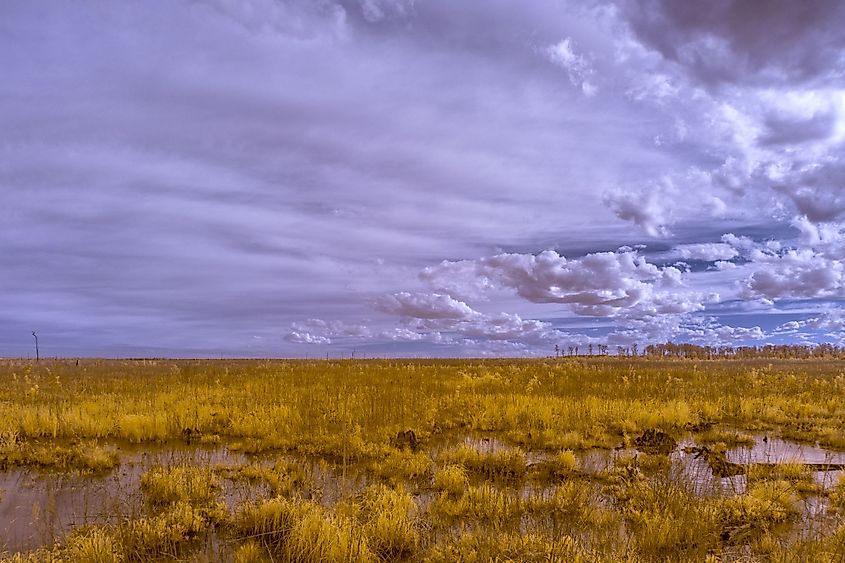
The Great Dismal Swamp is a vast wetland in the Coastal Plain Region, spreading across northeastern North Carolina and southeastern Virginia. At almost 113,000 acres, it is a vital wildlife habitat on the East Coast and home to all kinds of animals, from deer and bears to raccoons and river otters. The area is made of cypress swamps, forest floors, and marshes that also attract a sheer number of snake species, such as the northern water snakes, copperheads, cottonmouths, and pygmy rattlesnakes. The bountiful prey draws these in particular: amphibians, small reptiles, animals, and birds.
The Dismal Swamp offers an array of recreation opportunities, which draw boaters, anglers, nature viewers, and hunters, making human-snake interactions inevitable. However, the best way to avoid these snakes is to stay on the boat and ignore venturing into the water, as this is where they reside.
Northwest River Natural Area Preserve
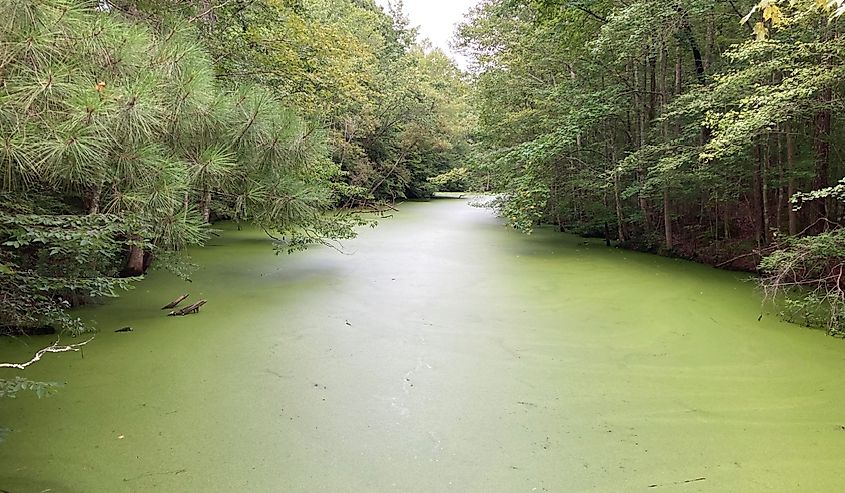
The Northwest River Natural Area Preserve is an expansive nature area in Chesapeake, spanning over 2,700 acres along the Northwest River. It features a rich mix of habitats, comprising wetlands, upland forests, marshes, and swamps, and presenting a paradise for different types of species, including ribbon snakes, northern water snakes, rough green snakes, and canebrake rattlesnakes. With no public access available to the preserve, the habitat remains undisturbed by human activity, allowing the snake population to grow exponentially.
Furthermore, enough prey, such as lizards, squirrels, and birds, is in the area to sustain the huge numbers comfortably. Snake bites are not so common here due to the remoteness of the area, but a few explorers managed to reach them by boat, curious about discovering the natural paradise.
Blackwater Ecologic Preserve
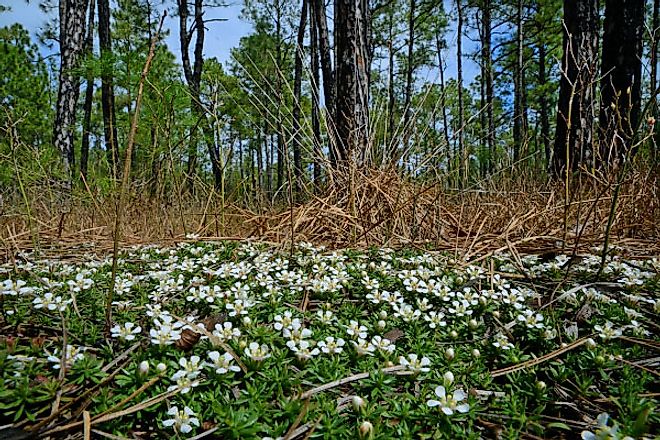
Located in Zuni, Virginia, the Blackwater Ecological Preserve spans more than 300 acres of raw wilderness and is under the ownership of Old Dominion University. A mixture of flatwood forests, longleaf pine savannas, and lowland swamps present optimal conditions for various snake species to thrive, hunting along the edges of the woodland. One of the most common snakes in the area is the northern copperhead, and infrequent visitation by humans into the park has allowed the snake population to survive unnecessary persecution and thrive.
This is because the public has to make prior arrangements with the university to tour the venue. With most tours being guided, the chances of human-snake conflicts are few and far between at the preserve, allowing for protection of the snake habitat.
Lake Gaston
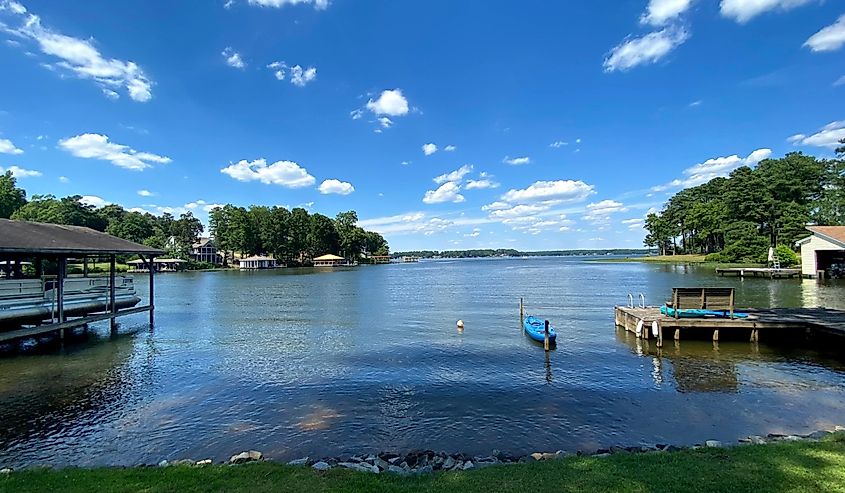
Lake Gaston is situated along the Virginia-North Carolina border, hosting a decent population of fish species, from catfish and largemouth bass to striped bass, and attracting anglers looking for a catch. The beautiful lake, with calm waters, is a popular recreation spot for swimmers, boaters, paddle-boarders, and campers. Despite its alluring beauty, Lake Gaston is one of the most snake-infested areas in Virginia, harboring species like the venomous copperhead and cottonmouth. Considering how popular a recreation escape the lake is, encounters between snakes and humans are very prevalent.
According to the Virginia Department of Game and Inland Fisheries, the area records one of the highest snake bite cases in the state. Any unwarranted interactions that may threaten the snake, including stepping on or pestering them, regrettably end up with a bite. On the flip side, this also means the snakes are adversely persecuted by humans, who deem them to be an automatic threat upon encountering them.
Back Bay National Wildlife Refuge

The Back Bay National Wildlife Refuge can be found on the southeastern side of Virginia Beach, and it was established to provide a sanctuary for migrating waterfowl. It features a range of habitats, from freshwater marshes to shrublands, beachfronts, scrublands, and upland forests. The nature area is an ideal habitat for different species of amphibians, mammals, reptiles, birds, and fish, which end up supplying the diet for the sizeable population of northern water snakes, eastern hognose snakes, saltmarsh snakes, black rat snakes, and the venomous cottonmouths.
Outdoor opportunities abound at the Back Bay National Wildlife Refuge, which is open to the public for those seeking biking, hiking, kayaking, sightseeing, and surf fishing adventures. This means bumping into a snake or two is common when exploring the vast natural space. The best course of action in such a scenario is to avoid getting close or demonstrating any form of aggression.
Prince William Forest Park
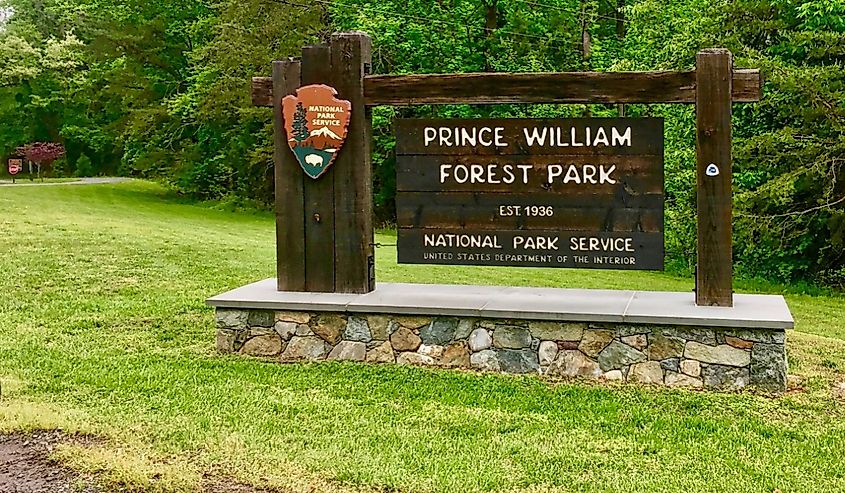
This sprawling natural area in northern Virginia has welcomed thrill seekers and adventure lovers to explore the great outdoors since the 1930s. Secluded from the urban centers, it is an oasis harboring diverse flora and fauna, made up of woodlands, flowing streams, and grassy areas, allowing a variety of wildlife to thrive. Besides smaller mammals and amphibians, snakes are common in Prince William Forest Park, often basking on the rocky outcrops along Quantico Creek. Some of the common species include the venomous northern copperhead and timber rattlesnake, and the non-venomous northern ringneck, eastern garter snake, and black rat snake.
Hosting scenic biking and hiking trails, isolated picnic spots, and camping cabins, the park sees a lot of human activities, with many adventurers encountering snakes along their path. In such a case, you are advised to find an alternative route around the snake and avoid pestering it.
Cherry Orchard Bog Natural Area
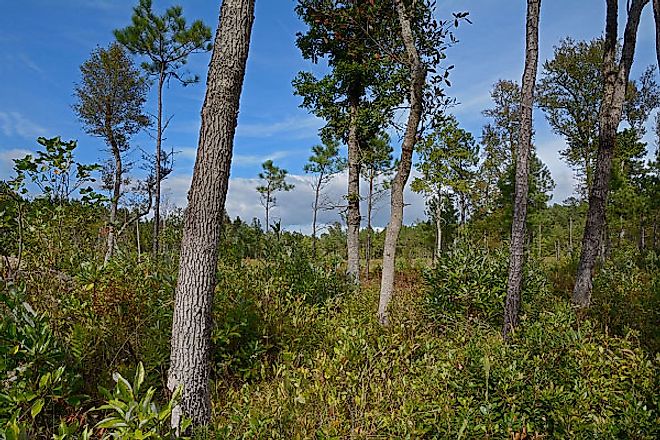
This 354-acre natural preserve straddles the counties of Prince George and Sussex and supports a diverse collection of rare flora, from purple pitcher plants and large-flowered camass to white-fringed orchids. The preserve also supports different wildlife-seeking habitats in the wetlands, shrublands, and woodlands that dominate the park. With so much greenery in the area, a bustling population of rodents, amphibians, reptiles, and insects ensures a continuous diet supply for the southern ring snakes and eastern hognose snakes that inhabit the region.
The protected status of the Cherry Orchard Bog Natural Area Preserve limits human activity in the area, allowing the snake populations to grow. Fortunately, the few people who get to access it don’t have to worry about venomous snakes in case of encounters.
Lake Anna
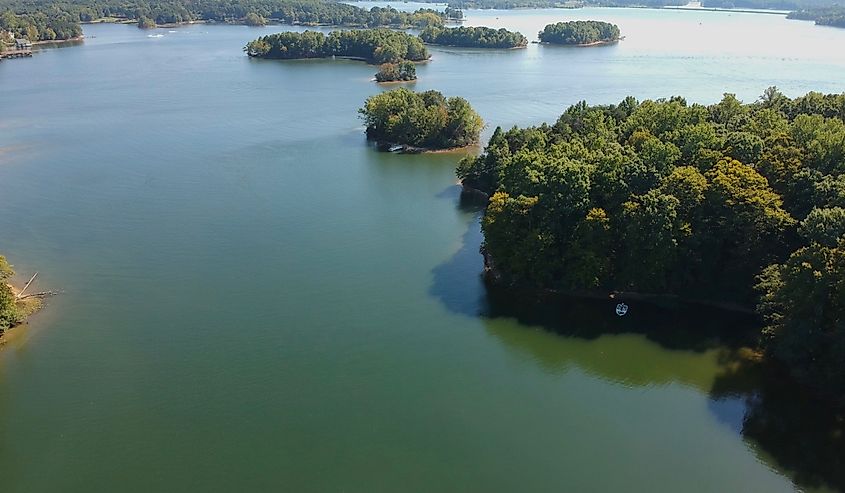
One of the largest freshwater lakes in mainland Virginia, Lake Anna spans almost 13,000 acres with a 200-mile shoreline. The large mass of water is popular among boaters, campers, water skiers, kayakers, and other water fun enthusiasts. Forming part of Lake Anna State Park, it is surrounded by woodlands, grasslands, and shrublands, creating the opportune habitat for diverse types of species, from fish and small mammals to reptiles and insects. With so much prey on offer, snakes are a common phenomenon in Lake Anna, with a varied selection of species making an appearance.
Some of these include the eastern rate snake, the northern water snake, and the copperhead. While most of the species here are not venomous, the copperhead carries venom that can harm you after a bite. Luckily, they are generally docile, and most of the bites reported here result from curious pets approaching them.
Assateague Island National Seashore
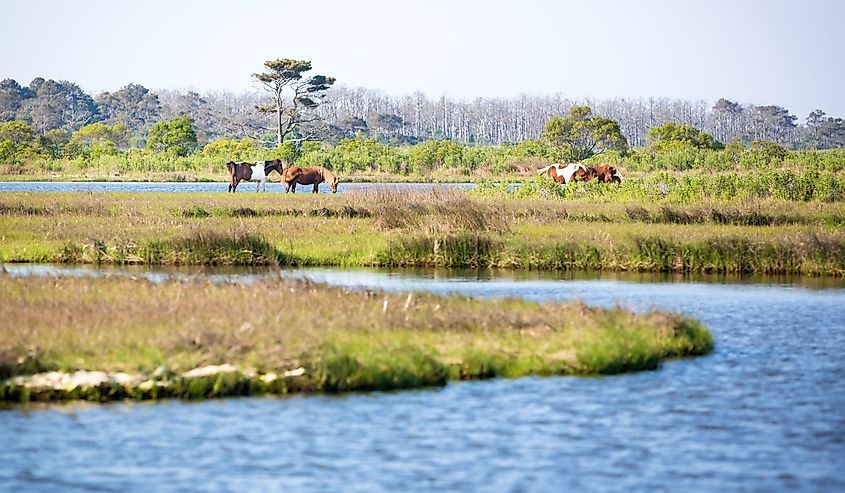
The Assateague Island National Seashore is a beautiful nature space straddling the coastal lowlands of Virginia and Maryland, known for its herd of wild horses. The area features a mixture of habitats, ranging from salt marshes and sandy beaches to coastal bays and marine forests. Furthermore, different species of snakes can be found on the island, including the black rat snake, the eastern hognose snake, and the northern water snake, which prefers to occupy the freshwater and salt marshes. Not many snake species can survive in the region due to its geographical isolation and the unfriendly nature of the salt water. Thanks to the island’s protected status, human activity is limited, allowing the snake population to grow without interruption.
Final Thoughts
Virginia's varied landscapes, from swampland and coastal marshes to forested hills, offer prime snake habitat with diverse species found nowhere else. While the common reaction for most people upon encountering a snake is to take off or persecute it, it is important to note that snakes are not out hunting humans but prey. Furthermore, they play an important role in the ecosystem that helps balance the population of various small animals, hence the need to peacefully coexist with them. So take the initiative today to protect snake infested areas in Virginia habitats and prevent their persecution by spreading awareness among the public.











